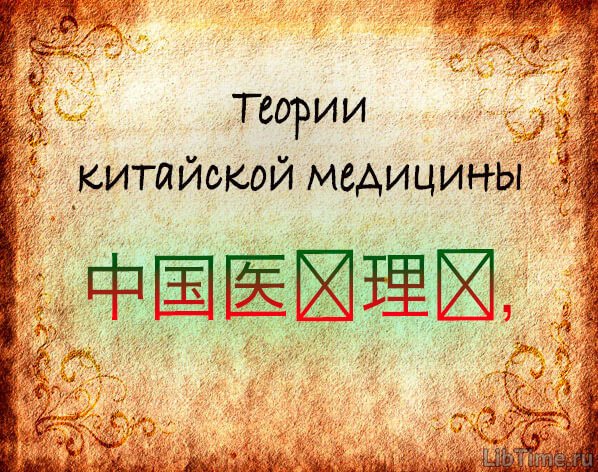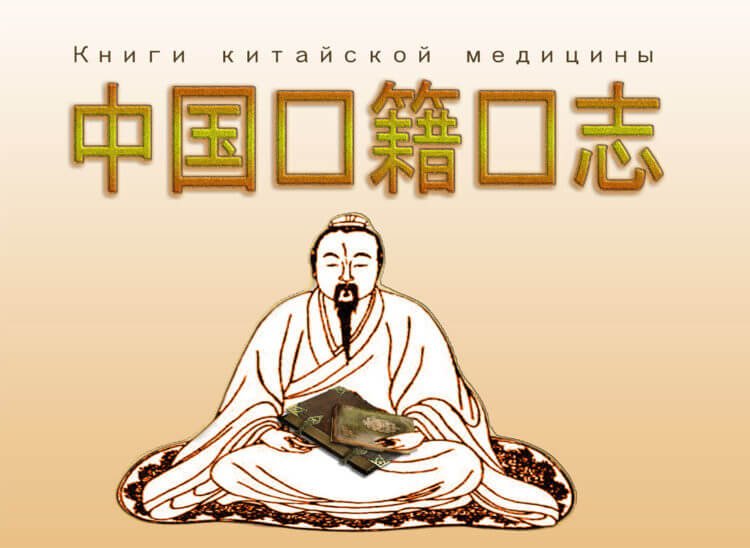Epidemic diseases in Chinese medicine
Epidemic diseases in Chinese medicine have been constantly in the center of attention, as they have always posed the greatest danger to the health of the people, inflicting on them particularly tangible losses.
Epidemic diseases in China
In-depth acquaintance with epidemic diseases in China began a long time ago, when Europeans saw in them sent by the sky "universal pestilence for ancestral sins" and the like. Chinese physicians early noted not only the circumstances under which epidemics most often appeared (drought, flood, famine, war), but also found that contact with the sick contributed to their spread.
Epidemic diseases were facilitated by the high population density of China, which could only be compared in those ancient times with Egypt, located along the Nile, a narrow strip of fertile land.
The earliest information about smallpox dates back to 1400 BC, when the epidemic was introduced from India, and most often its foci appeared in commercial centers, seaside and port cities.
Epidemiologic statistics
Very long ago in China, a kind of epidemiologic statistics was also laid down. For this purpose, servants were placed at the city gates to count the number of dead people taken out of the city. At the same time, others collected information from undertakers about the number of coffins they sold. On the basis of these data the daily mortality rate was determined.
Classification of diseases by body parts
Classification of diseases in Chinese medicine goes:
- by individual parts of the body,
- by the nature of the ailments and their causes,
- by methods of treatment.
The most ancient is the classification of diseases according to body parts. Back in the 14th century BC were described diseases of the tongue, teeth, ears, eyes, head. And a little later infectious and surgical diseases were added to them. Thus, in a special chapter of the code of laws of Zhou li, information relating to the 8th-5th century B.C. about:
- malaria,
- parsha,
- abscess,
- tumor,
- ulcer,
- rabies,
- arrow wounds,
- bone fractures.
It also set forth the basics of dietary therapy, medication and surgical treatment. About two and a half millennia ago, doctors of Chinese medicine already had a rational system of classification of diseases.
Epidemic diseases in Chinese medicine
Let us consider the data of Chinese medicine on individual epidemic diseases.
Infectious disease plague
In ancient Chinese medicine 8 names are given to plague. Each of them points to some symptom or factor that plays a certain role in the etiology of plague, and to some extent is not devoid of rationality. Here they are, these names and their interpretations:
- shi-i - disease dependent on a known epidemic "gene";
- wen-tsi, pestilence from contagious air;
- shu-i - plague of rats;
- luan-tsu-zhen - bubonic disease;
- biao-sho - shooting snake (meaning rapid plague infection);
- da-tau - lumpy disease;
- hong-si-ding - affecting the skin;
- yang-za-chuang - itchy wounds.
The leading place in the fight against plague was given to prevention. Ancient Chinese doctors were based on the fact that the contagious beginning of plague develops in the surface layers of soil. Therefore, the first to be affected are rats that swarm there. Rats infect cats, pigs, cattle. And from them, humans.
The established fact of plague-carrying rats and its connection with the epidemic in humans - the discovery of Chinese medicine. At the first information about mass death of rodents, various measures were immediately taken to prevent the epidemic. Many chronicles describe how whole villages were removed from their places, seeking shelter on the uplands.
At the same time, they stopped eating meat from animals, especially pigs. Water sources were taken under public control, and round-the-clock watch was established near them. Doctors widely prescribed laxatives (rhubarb), diaphoretics (ginger) and some diuretics.
If the course of the disease was accompanied by hemoptysis, drugs containing tannin, potassium iodide solution in sea water were recommended. From the external remedies used rubbing ground leaves of wild chrysanthemum or preparation, which included lime and calomel, diluted in seawater.
The infectious disease cholera
Another formidable scourge since ancient times was cholera in China. In the main canon of national medicine Nei-jing, written, according to legend, by Emperor Huangdi in 27-28 centuries BC (and according to more reliable data, created no later than the 3rd century BC), cholera is not only mentioned, but an attempt is made to explain its etiology by the action of "bad gases" coming from deep damp valleys.
It is also noted there that two types of cholera should be distinguished - "dry" and "wet". The second kind, with vomiting and diarrhea, was considered particularly dangerous and had a high mortality rate. At the first symptoms of the disease it was prescribed to prescribe medicines, which were a kind of complex, including opium, various astringents and adsorbents.
In the form of distraction (this method in general has wide indications) used rubbing and massage of the neck, back, abdomen, cauterization in certain points and plasters. At the height of the disease Chinese physicians resort to excitatory agents - camphor, ginger and others. And in the algid state are recommended infusion into the mouth of the patient ginger with sugar or cooked in rice alcohol.
The last and most effective remedy for cholera was considered acupuncture. In this sense, it is interesting to consider the story of missionary Archbishop Favie, who was an eyewitness of the following case, cited by V. V. Korsakov, a famous Russian doctor who lived in China for many years.
A missionary fell down on the road in an attack of cholera. Two Chinese doctors came up to him and "stuck iron needles with fine yellow copper ears into his hands and feet. Blood did not show at the points of the pricks. Then they stuck a needle about an inch long under his knee. A drop of black blood appeared, "He is saved," said one of the doctors, "but we must continue the treatment." They began the injections again, and in a quarter of an hour the patient turned on his bed, where he was carried. Seeing this, one of the doctors said: "That is good, but precautions must be taken before he can be sent to his bed." They stuck four 8 centimeter long needles into his forearm, after which the patient was carried to Peking. All night he slept peacefully," Favie ends his story, "and the next day he was completely healthy.
Passing on this, Korsakov evades any final conclusion and even comments. He himself did not observe anything like this. And modern experts in the field of acupuncture, such as Dr. Zhu Lian, believe that in this case, obviously, for cholera was taken acute gastroenteritis, because there is no data, laboratory confirmation of the cure of cholera by this method of treatment.
Camphor was prescribed for cholera, and at the same time various liquids, such as rice broth, were strictly forbidden.
The infectious disease smallpox
The two most common Chinese names for smallpox, tian hua and dow, both contain certain descriptive elements. The former can be translated as "heavenly flowers," while the latter means "peas," after the type of rash in this disease. The name "pull hua" can be explained as follows.
Smallpox was so common in old China that it was considered something indispensable. This popular conception of the disease was interpreted by the churchmen to mean that it was the destiny of heaven. Hence, apparently, the definition of "heavenly flower". The greatest spread of smallpox epidemics was noted in winter. Chinese doctors found a pretty convincing explanation for this:
- in the summer, people aren't so attached to their homes,
- These dwellings are open to the "good wind" and the sun, which with its "fire" burns out the disease.
The same explanation was given by V. V. Korsakov. He added, as an important circumstance, that in summer warm clothes are folded in separate rooms. The importance of wearables in the mechanism of disease transmission was not a secret for Chinese medicine. As for natural ventilation and the bactericidal action of sunlight, V. V. Korsakov, substantiated these health-improving factors from truly scientific positions.
Smallpox is considered to have been brought to China from India in 1400 B.C. And this is quite a probable date, since the first writings about it date back to 1120 B.C., the very beginning of the reign of the Diaspora. - And around 250 BC, Fei Zi-Tai wrote one of the best books on smallpox , which was considered a classic for centuries.
The most significant contribution of Chinese medicine to the control and prevention of this serious disease is the variolation of human smallpox. This discovery dates back to the Song Dynasty (960-1279), (read more: China in the 12th century). It is reported that variolation was first performed on the son of Prince Tshin Fiang, who had lost several of his children to smallpox a short time before.
About a thousand years ago, the following instruction on smallpox inoculation was drawn up. The scabs of smallpox pustules should be collected from strong children who can easily bear the disease. They should be dried and stored in hermetically sealed new (freshly burnt) porcelain vases, for a period not exceeding 6 months.
Variolation is done in the fall or spring, the day for this is chosen "moderate", not hot and not cold, windless. And one more preventive rule: vaccinations can be given only to quite healthy children. They are most often made by blowing powdered scabs into the nostrils.
It is also possible to put a paper tampon soaked in a solution of scabs in a small amount of water into the nostrils for three days. The method of rubbing scab powder into the skin is also mentioned, but inoculation through the nose has always been favored. The fact is that, according to Chinese anatomy, the nostrils are the "outer opening of the lungs" from which the air is carried throughout the body".
There was another method of variolation - the clothes of the sick person were put on the child. Chinese medicine distinguishes three types of smallpox according to the course of the disease:
- mild ("shun do"),
- severe (Jian Dou),
- and hopeless (Ni Dou).
From the last one people die within a day.
The early discovery of variolation explains the fact that the literature on Chinese medicine describes comparatively few remedies for the treatment of smallpox, except those that are symptomatic and therefore not specific. Special pomades and ointments containing gleet and bee honey were widely used to heal pustule wounds.
The infectious disease typhoid fever
Comparatively little data on the treatment of typhus, although the division of them into typhus("hungry") and abdominal was made very long ago. This is explained, apparently, by a rather paradoxical fact. With great overcrowding of the population, mass impoverishment of the working masses, and considerable pollution of water sources in old China, typhoid fevers were spread rather little.
The clue, we may suppose, lies in the fact that the Chinese have long since not drunk raw water, but always boiled it and consumed it in the form of tea. They, by tradition, even wash with boiled water. Pretty effective prevention!
Among the various remedies against this disease , rhubarb and ginger should be emphasized. The latter can sometimes significantly lower the temperature. Thus, V. V. Korsakov mentions one case in which a typhoid patient under the influence of ginger was induced to break a sweat and the temperature from 41 ° decreased to 37 °.
The infectious disease of dysentery
Chinese physicians have long distinguished between two main types of dysentery:
- Fresh, characterized by copious pink-colored feces;
- old, when the feces are bloody, mucousy and purulent.
In addition, 14 more species are described, which also differ in the amount and character of stools. In acute dysentery, tinctures of tea, decoction of the root of water poppet, ginger, nutmeg are prescribed internally. To treat chronic dysentery, which is accompanied by severe gauntness and general weakness, it is recommended genentiana, aconite root, and further soaked ginger, sunflower.
Of the wide arsenal of therapeutic agents of animal origin, frog body powders are used in Chinese medicine, for example in the treatment of dysentery.
Infectious disease diphtheria
For obvious reasons, Chinese medicine did not have methods for accurately recognizing diphtheria. For this purpose, it did not have at its disposal the means of modern bacteriologic research. Therefore, in the group of diphtheria a number of authors included other diseases similar to the latter in some symptoms.
But if to abstract from this circumstance, it is necessary to recognize that Chinese doctors have long ago developed their original methods of treatment of diphtheria and achieved good results. Most often they resorted to blowing into the throat of the patient every 2-3 hours a special powder of rather complicated composition. Here, by way of illustration, is one such prescription:
- crushed pearls 15 weight. parts,
- gallstones of certain animals 3 weight parts,
- urinary sediment 11 weight parts,
- charred prunes 7 weight parts,
- indigo scale,
- purified camphor,
- licorice root 3 weight parts,
- borax, cinnabar, acetic acid copper 11 weight parts,
- and other substances (ambergris, musk, soot) 1 weight parts.
Blowing is done either by means of a tube rolled up from paper, or by means of a metal insufflator. It is a metal vessel resembling a pocket sprayer or oil can with its reservoir with thin somewhat convex side walls.
Pressing them inside the vessel creates pressure, and the contents - powder - is pushed out, atomizing through a hollow tube up to 14 cm long; it consists of three parts entering one into another. By blowing the medicine down the patient's throat, the doctor simultaneously presses down his tongue. For this purpose serves a special flat spatula with a short handle.
As a distraction in diphtheria is used massage in the neck area.
Infectious disease measles
Measles is described in detail. It is indicated that it is often sore throats, bronchitis, conjunctivitis, fever, sometimes diarrhea. This disease is considered to be non-malignant. But at the same time it is recommended to pay special attention to the heart, liver, lungs, as complications often arise in these organs.
Of the many means used in measles, affecting the disease itself by eliminating some of its manifestations, very peculiar and original, - pulverization decoct of parsley seeds.
These are the general data of Chinese medicine on the principles, means and methods of treatment of some infectious diseases.
The infectious disease malaria
Malaria ranks first among a considerable number of non-infectious diseases. As early as 44 A.D., a case of death from malaria was recorded. A rather correct clinical picture of malaria was described in a specially dedicated book by the physician Wu-Qing of Su Zhao as early as 1641 (more information: China in the 17th-18th centuries).
He attributed a major role in the etiology of malaria, along with wind, heat, cold, dampness, harmful vapors of marshy plains. They get into the body, according to Wu-Qing, "through the entrance gate" - mouth, nose and pores. But contagion does not always cause disease.
It occurs only when conditions favorable to it are present. In the course of malaria, Chinese medicine distinguishes, according to the main symptoms, the following forms:
- severe chills without fever;
- severe chills with slight fever;
- only fever without chills.
In attacks, if they are accompanied by headache, rubbing peppermint oil on the temples is prescribed. And for the treatment of the attacks themselves , wormwood, oculus, tortoise shell is prescribed. Depending on the patient's condition, antipyretic, tonic and tonic remedies are also used.
Acupuncture has long been considered a very effective means of combating malaria in China. This method is now recognized by doctors with scientific training. Epidemic diseases in Chinese medicine were recognized much earlier compared to medicine in other countries, and recipes and recommendations for their prevention and treatment were developed.


